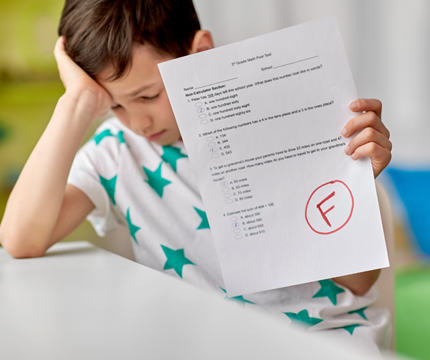Have you ever wondered why teachers teach a particular topic or activity?
Demitra engages the viewers in understanding the English Language Arts K-4 standards and several activities to increase comprehension. Would you like to know your child's current reading level? Schedule your session today at www.mytutorhelpsme.com
The Secret Formula: 3 Tips for Parents and Kids to Choose the Perfect Book
Thursday, August 1, 2024 by Demitra Bryant | Tips
"The Secret Formula: 3 Tips for Parents and Kids
to Choose the Perfect Book"

Finding the right book for your child can transform their reading experience, making it both educational and enjoyable.
Here’s the secret formula to help you choose books that are perfect for your elementary or middle school reader. Plus, we’ll explore how you can teach your child to select the right books at their school library using three easy rules.
Understanding Reading Levels
Before you start selecting books, it's important to understand your child's reading level. Schools often use systems like Lexile measures, DRA (Developmental Reading Assessment), or Fountas & Pinnell levels to categorize a child’s reading ability. Here’s a brief overview of each system:
Lexile Measure: This scale provides a numeric value that indicates the complexity of a text. Higher numbers represent more complex texts.
DRA Levels: These are developmental stages that show a student's reading fluency and comprehension. The levels progress from easier to more challenging texts.
Fountas & Pinnell: This system uses letters to indicate reading levels, with each letter representing a specific range of abilities.
Once you know your child's reading level, you can use it as a guide to find suitable books. However, it's also crucial to consider their interests and engagement with the book.
Teaching Your Child to Select Books at the School Library

Empowering your child to choose their own books at the school library can foster independence and a love for reading. Here are three simple rules to help guide their selection:
1. The Goldilocks Rule:
Just Right: Teach your child to look for books that aren’t too easy or too hard but challenge them just enough to make reading enjoyable and engaging.
Interest Check: Encourage them to pick topics they find interesting. A book that piques their curiosity will likely be a good fit.
2. The Two-Finger Test:
Word Count: Show your child how to open a book and read a random page.
Two or Fewer Unknown Words: If they don’t know more than two words on the page, the book is likely at the right level.
Fluency: Fluency is the ability to read text smoothly, quickly, and with expression. It’s not just about reading each word correctly but also understanding and enjoying the story. When a book is at the right level, your child should be able to read it comfortably without getting stuck on too many words, allowing them to focus on the meaning and flow of the story. This balance helps them improve their reading skills while still enjoying the book.
3. The Five-Finger Rule:
Read a Page Aloud: Have your child read a page aloud.
Count Unknown Words: For each word they don’t understand, they should put up a finger.
Five Words: If they reach five fingers, the book might be too difficult. A book with fewer than five unknown words per page is generally suitable.
Choosing the right books for your child is about balancing their reading level with their interests. Understanding their reading level, combined with strategies like the Goldilocks Rule, the Two-Finger Test, and the Five-Finger Rule, can guide you and your child in selecting books that foster a love of reading and encourage growth.

Encourage your child to explore different genres and topics to find what truly captivates them. By teaching them how to choose books independently, you empower them to take control of their reading journey. Remember, the goal is to make reading an enjoyable and enriching experience.
Are you curious to know your child's current reading level? Reach out for your FREE 30-minute consultation.
Three Key Tips to Keep Your Kids Engaged in Reading and Writing Over the Summer
Monday, April 22, 2024 by Demitra Bryant | Tips
Three Key Tips to Keep Your Kids Engaged in Reading and Writing Over the Summer

Summer break is a wonderful time for relaxation and fun, but it's also a crucial period to maintain and even enhance your child's literacy skills. A break from the regular school routine doesn't have to mean a break from learning. Here are three engaging tips to keep your young scholars excited about reading and writing, even while they're on vacation!
1. Create a Summer Reading Journey
Why this tip?
Summer offers a unique opportunity for children to read for pleasure, away from the pressures of school assignments. Encouraging reading during the summer helps maintain reading skills, improves vocabulary, and helps develop empathy and a broader worldview.
Activities:
- Book Passport: Create a “book passport” for your child where they receive a stamp for each book completed. You can include different genres and authors to diversify their reading experience.
- Reading Challenges: Set up weekly or monthly reading challenges that can be fun and attainable. For example, read a book with a blue cover, a book about animals, or a book set in another country.
2. Engage in Storytelling Projects
Why this tip?
Writing isn't just about putting pen to paper; it's about expressing ideas, crafting stories, and communicating thoughts. Summer projects can help children find their own voice and improve their writing skills in a creative and engaging way.
Activities:
- Create a Vacation Journal: Encourage your child to keep a journal during their summer travels or a daily diary. This can include descriptions of places they visit, new foods they try, or interesting people they meet.
- Write Postcards: If they're traveling, have them send postcards to friends and family. If they're staying home, they can create fictional postcards from exotic locations using their imagination.
3. Incorporate Technology in Learning
Why this tip?
Leveraging technology can make learning interactive and exciting. It also prepares children for the digital world by improving their digital literacy.
Activities:
- Educational Apps: There are numerous apps available that focus on literacy and creativity. Apps like Epic! provide access to thousands of books, while others like Storybird allow kids to create their own stories with beautiful illustrations.
- Interactive Writing Blogs: Encourage older children to start a blog or a digital scrapbook where they can document their summer activities, write reviews of books they've read, or share their own short stories.
Conclusion
Summer doesn't have to mean a pause in learning. By integrating these tips into your summer plan, you're not only helping your child stay connected to reading and writing, but you're also setting them up for a seamless transition back to school. These activities will keep their minds engaged, encourage creativity, and make learning a fun part of their summer adventure!
Remember, the key to a successful summer learning plan is flexibility and fun—mix and match activities to suit your child's interests and plans! Enjoy the summer of learning!
Demitra
How to Help Your Child Overcome Reading and Writing Challenges
Monday, January 8, 2024 by Demitra Bryant | Tips
As report cards roll out and academic assessments come to light, many parents are coming face-to-face with an alarming reality: their children are struggling in school, particularly in reading and writing. This struggle is not just about grades; it's about foundational skills that are crucial for academic success and beyond.
The Rising Tide of Challenges
In recent years, there has been a noticeable decline in reading and writing proficiency among students. Teachers, burdened with large class sizes and diverse learning needs, often find it challenging to provide individualized attention. This, coupled with the rapid changes in education due to technology and other factors, leaves many students, especially those in elementary and middle school, at risk of falling behind.

The Core of the Problem
Reading and writing are not just subjects in school; they are the keys to understanding virtually all other areas of education. When a child struggles with these basic skills, their entire academic journey can become an uphill battle. From failing grades to declining district assessments, the impact is significant and far-reaching.

Identifying the Signs
As a parent, you might notice your child avoiding reading and writing tasks, showing frustration with schoolwork, or demonstrating a lack of confidence in their abilities. These signs are often indicators of underlying challenges that need to be addressed.

The Role of Parents
While teachers play a vital role in a child's education, parents are equally crucial in supporting their learning journey. Encouragement, understanding, and the right support at home can make a significant difference.

How to Help
-
Create a Reading-Friendly Environment: Foster a love for reading by having a variety of books available at home. Designate a cozy reading corner to make reading an enjoyable experience.
-
Encourage Writing: Encourage your child to keep a journal or write stories. This not only improves writing skills but also helps in expressing thoughts and emotions.
-
Set Aside Regular Study Time: Establish a routine that includes dedicated time for reading and writing activities.
-
Use Technology Wisely: Educational apps and online resources can be great tools to enhance reading and writing skills in a fun and interactive way.
-
Read Together: For younger children, reading together can improve reading skills and build a stronger parent-child bond.
-
Seek Professional Help: If your child continues to struggle, consider seeking help from a tutoring service that specializes in reading and writing.

Turning the Tide with Expert Support
As a certified teacher and professional tutor with years (26) of experience in helping students improve their reading and writing skills, I understand the unique challenges each child faces. My approach involves personalized strategies that cater to individual learning styles and needs. Whether it's through one-on-one tutoring sessions, group workshops, or specialized programs, the focus is on building confidence, skill, and a love for learning.
Success Stories
Many students who have come through our doors with challenges in reading and writing have seen remarkable improvements. From significant grade improvements to newfound confidence in their abilities, the transformation is both inspiring and a testament to what targeted support can achieve.

The Next Steps
If your child is struggling with reading and writing, the time to act is now. Early intervention can make a significant difference in their academic journey. Consider the following steps:
- Assess the Situation: Understand the extent of your child's challenges.
- Talk to Their Teacher: Gain insights into their performance at school.
- Explore Tutoring Options: Find a tutoring service that aligns with your child's needs.
- Set Goals: Work with your child and their tutor to set achievable goals.
- Stay Involved: Regularly check in on your child's progress and maintain open communication with their tutor.

Conclusion
The journey to overcoming reading and writing challenges is not a quick fix but a gradual process of improvement and confidence-building. By acknowledging the problem, understanding the role you play as a parent, and seeking the right help, you can turn the tide for your child. Remember, every child has the potential to succeed, and with the right support, they will.




